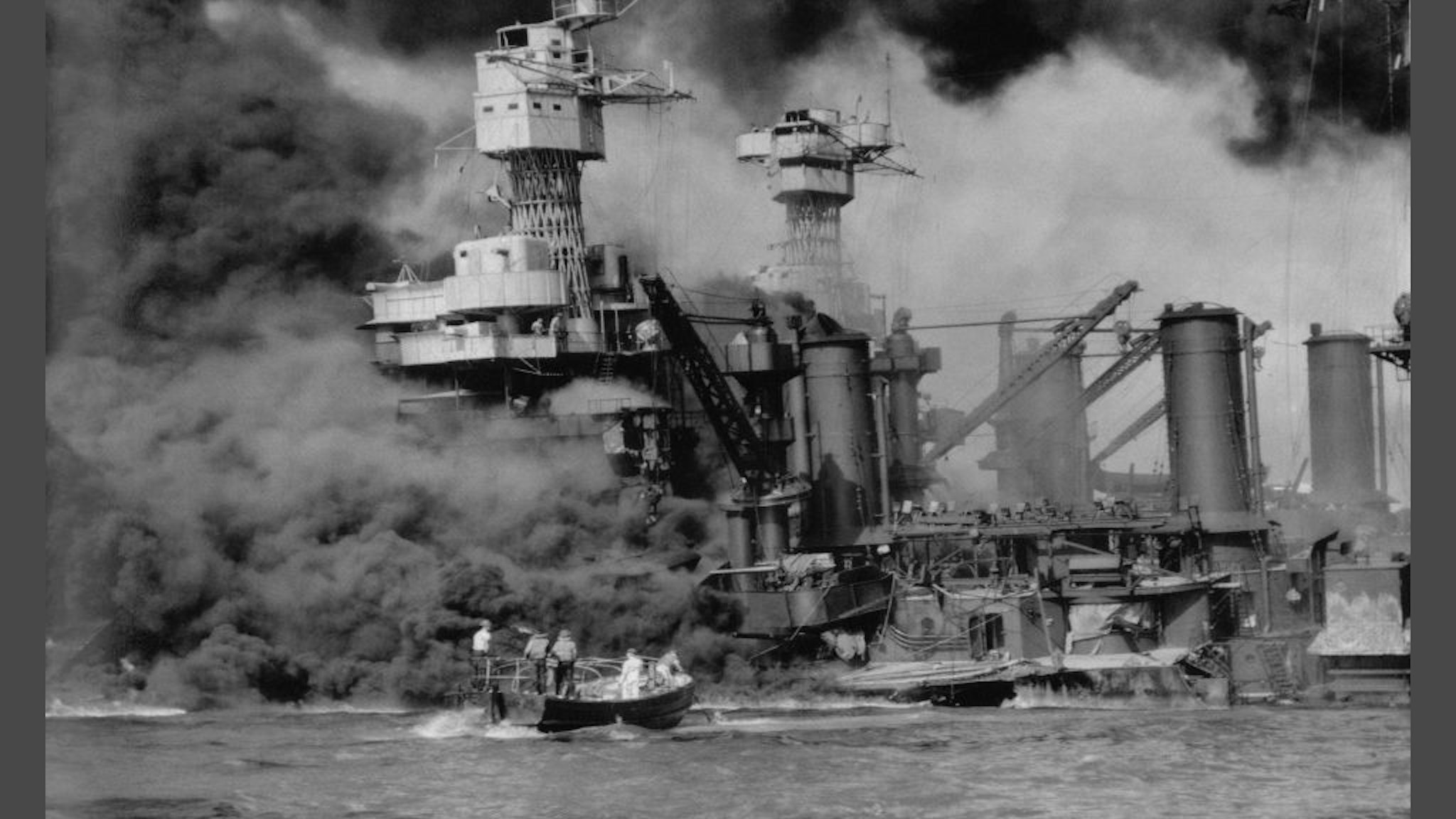“Yesterday, December 7, 1941— a date which will live in infamy— the United States of America was suddenly and deliberately attacked by the naval and air forces of the Empire of Japan,” then President Franklin Delano Roosevelt put the surprise attack — which left about 2404 American service-members and civilians dead and thrust the United States into war — into words.
Today, as the United States remembers that Sunday morning 80 years ago, the survivors barely number in the dozens. But just one day earlier, all was quiet.
Good morning from the USS Arizona Memorial. Pearl Harbor is peaceful this morning just as it was 80 years ago. 24 hours later the United States would be at war. #PearlHarbor80 pic.twitter.com/ZTRiwIhCyO
— USS Arizona (@USSArizona) December 6, 2021
Tomorrow is the 80th anniversary of the Japanese attack on Pearl Harbor. With partly cloudy skies and good visibility, the weather did not make it difficult all for the Japanese aircraft to target our Pacific Fleet. pic.twitter.com/6SegcTHVNp
— Jack Gerfen ☈ (@WCIA3Jack) December 6, 2021
But everything changed as morning dawned on December 7, 1941.
- At 6:10 a.m. local time, the USS Condor sighted a periscope — and within moments, the first wave of Japanese fighters were in the air. They took off from carriers located some 200 miles north of Oahu.
- At 6:45 a.m., sailors aboard the USS Ward fired on a Japanese submarine. Despite the fact that the United States had not yet officially entered the war, those sailors are remembered for firing the first American shots in World War II.
- Eight minutes later, at 6:53 a.m., the USS Ward radioed Navy headquarters to inform them of the engagement, but the decoding process delayed the message.
- At 7:02 a.m., an Oahu-based radar station reported sighting an unidentified aircraft heading toward Hawaii. An Army lieutenant, believing the reported aircraft were American B-17s flying in from California, disregarded the warning at 7:20 a.m..
- By 7:40 a.m., the first wave of Japanese fighter planes — “Zeros” — was flying over Oahu. The command to attack was given at 7:49 a.m.
- At 7:55 a.m., the Japanese planes began their assault.
- At 8:10 a.m., the USS Arizona exploded.
In this photo of the keel being laid in 1914 for USS Arizona, the little boy holding Assistant Secretary of the Navy Franklin D. Roosevelt’s hand is Henry Williams, Jr.
In 1941 Lt. Henry Williams would also be at Pearl Harbor and would watch the Arizona explode. #PearlHarbor80 pic.twitter.com/gCvXaJJdAk
— USS Arizona (@USSArizona) December 6, 2021
- The USS Helm, a destroyer, intercepted a Japanese submarine at the entrance of the harbor. The Helm fired on the submarine, sinking it by 8:17 a.m.
- A second wave of Japanese fighters arrived at 8:54 a.m., almost exactly after the first attack.
- The USS Shaw exploded in dry dock at 9:30 a.m. after taking heavy fire.
By 10:00 a.m. local time, just over two hours after the first Zeros attacked, the Japanese turned around and returned to their carriers.
7 Dec 1941, Japanese launch surprise attack on Pearl Harbor. 21 US ships & 300+ aircraft were sunk or damaged. 2,400 Americans killed & 1,178 wounded. Japanese lost 29 planes & 64 killed. Fortunately for US, all three of its Pacific Fleet’s aircraft carriers were absent. #WW2 pic.twitter.com/tI9dUBmBYK
— Revd Nicholas Pye (@RevdPye) December 7, 2021
Two American battleships — the USS Arizona and the USS Oklahoma — were total losses. Target ship USS Utah was also completely destroyed. The Japanese lost 29 of the 353 planes that were involved in the attack.
But the attack ultimately pushed the United States into fighting back, drawing a once-reluctant President Franklin Delano Roosevelt into a two-front war. As Japanese Admiral Isoroku Yamamoto wrote in his diary after the attack, “I fear all we have done is to awaken a sleeping giant and fill him with a terrible resolve.”
Pearl Harbor, eighty years ago today: pic.twitter.com/c0sL9yBfQL
— Michael Beschloss (@BeschlossDC) December 7, 2021
The tide did not turn in the Pacific theater until June of 1942, when intelligence officers and codebreakers — some of whom had originally been musicians aboard ships that were lost at Pearl Harbor — intercepted Japanese communications ahead of the Battle of Midway. Armed with that information, a handful of American pilots were able to hand the undefeated Japanese Navy its first major loss.

